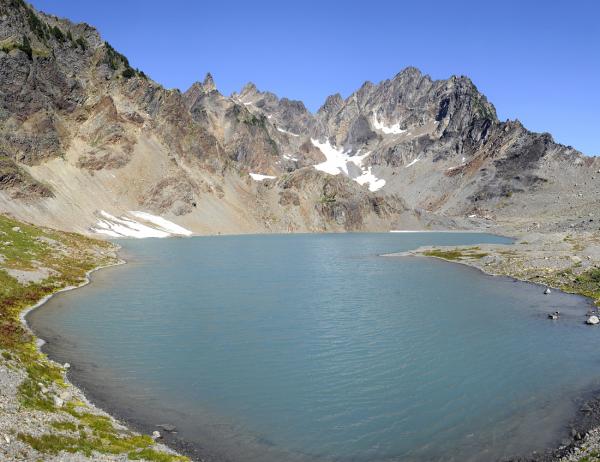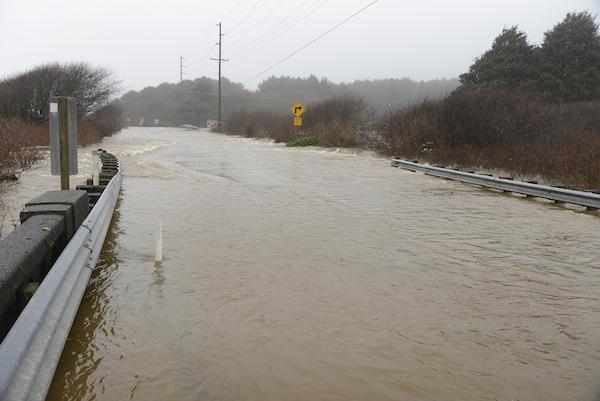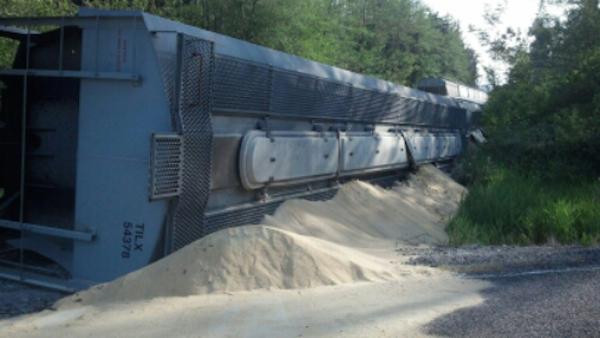Quinault Nation President Fawn Sharp appeared before the House Interior Appropriations Subcommittee in Washington, D.C. on March 24 to request federal funding to support the relocation of homes, public buildings and schools out of a tsunami zone in the coastal village of Taholah.
Sharp’s testimony came a week after the Affiliated Tribes of Northwest Indians, of which she is president, hosted a summit, “Asserting Native Resilience – Protecting and Enhancing Tribal Resources and Sovereignty in the face of Climate Change.”
After her House subcommittee testimony, Sharp – a University of Washington-educated lawyer and former state administrative law judge – talked with ICTMN about the summit and what she believes the next steps must be to stem the tide of climate change and the devastation that would follow.
RELATED: Climate Change: Mankind Must Stop Destroying ‘Our Own Mystical Place’
Quinault Nation President Fawn Sharp, during the 2013 Canoe Journey/Paddle to Quinault: “Climate change is expected to significantly alter the ecology and economy of the Pacific Northwest, and Tribes and Native communities are among the most climate-sensitive groups within this geographic area.” (Richard Walker)
What are some of the extreme examples of climate change that were presented at the meeting?
As we have known for some time, our ocean waters are acidifying due to increased pH levels caused by carbonic acids that result from the release of carbon dioxide into the atmosphere. It’s estimated that up to 40 percent of the carbon released by humans enter the ocean, as well as rivers and lakes.
Generally speaking, there is nothing new about this. But the increased levels of carbon released by humans since the industrial age has had major impacts and, as population has expanded in the U.S. and elsewhere, the increased amount of automobile emissions as well as other fossil fuel emissions have led to ever-increasing change in the form of water temperature increases and acidification.
So should this concern us? It absolutely should, because it is impacting the ecosystem. People should never think they live in some form of protected bubble, or that they can ignore the environment and get along just fine.
People are just as dependent on a healthy ecosystem as every other living creature on Earth, and anytime any specie is in danger, we are affected. But, whether due to fear of losing their job or a feeling of helplessness or some inaccurate information they might have heard somewhere, far too many people do nothing about it. They ignore it or even deny it. That’s just not good enough.
Everyone who lives on our Mother Earth has a responsibility to protect her. Everyone who drinks water in one form or another has a duty to assure it is pure. And every person who breathes God’s air is responsible for its quality.
The ocean is warming. It has become acidified. The sea level is increasing, increasing the intensity of storm surges, as well as flooding, erosion, forest fires and habitat loss. Glaciers have melted or are melting, causing rivers and lakes to warm and making them uninhabitable for fish. We feel all of these impacts at Quinault Nation. Our Mount Anderson glacier is gone. It was there for thousands of years and over the past few years it simply melted. That is warming the water and making salmon restoration more challenging.
What are some innovative ways tribal nations are responding to the challenges presented by climate change?
There are innovative approaches being used or planned by some tribal nations but the bottom line is that Mother Nature’s ways are best. Fish and wildlife need a healthy environment, just as people do. Securing those resources and protecting them for future generations requires respect for the environment. It’s an old tribal value to take only what you need from Nature to survive, and use all that you take. It’s also an old value to base the decisions one makes today on the impacts they will have seven generations from now.
As my very good friend Billy Frank Jr. used to say, “You have got to see the big picture.” Those who rush to drill every drop of oil they can now so they can get as rich as they can, regardless of the impact on the environment, do not see the big picture. Those who neglect the environment when they use pesticides or buy high gas-consumption cars don’t see the big picture. Those who neglect instream flows in their quest for irrigation water or build dams on rivers simply do not see the big picture.
But to answer your question, there are many ways that tribes are being innovative in responding to the climate change problem. This is probably the biggest environmental problem that exists in the world today. So tribes have been gathering, as nations, on a national and international scale to share ideas, consolidate plans and garner strength in their efforts to have a strong voice in their call for the countries of the world to change their ways. We want them to stop poisoning the planet, stop killing all the animals and plants and stop destroying all the habitat. We have been working with the United Nations and other international organizations to achieve the level of recognition the Indigenous Peoples of the world deserve.
We have reached out and been a part of many efforts designed to see solutions to climate change. I served on the Governor’s Carbon Emissions Task Force all summer long as we developed a gas tax plan for the state, which is now being considered in the legislature.
Virtually every tribe in the state is involved at some level in protecting, enhancing or restoring habitat. Quinault has been for many years. Those efforts are constantly innovative in their approach – whether our scientists are developing new ways to place trees in the river to regain natural hydraulics in the system or devising new ways to place gravel for spawning habitat. We invest in our science and in our river, lake and marine restoration and protection programs because it supports our future, it is true to our heritage and because it’s the right thing to do.
(Sharp then shared information about the Swinomish Tribe’s Climate Change Initiative, which can be viewed at here.)
What will ATNI do with the information that was presented at the climate change summit?
ATNI will work with a group of tribal representatives from Pacific Northwest Tribes and Inter-Tribal organizations, in collaboration with federal, state and local governments, to prepare summary recommendations on the following by the next ATNI convention in Warm Springs, Oregon on May 18-21:
One, begin to identify Pacific Northwest Tribal needs for climate change and organize tribes regionally to support increased funding, technical support, and capacity to address those needs.
Two, identify strategies to promote and protect tribal sovereignty and tribal resources.
Three, prepare a strategy to engage Pacific Northwest Tribes on developing a policy framework for a “Pacific Northwest Tribal Action Plan on Climate Change, Energy, and Greenhouse Gas Emissions,” similar to California, Oregon, Washington and British Columbia’s “Pacific Coast Action Plan on Climate Change, Energy, and Greenhouse Gas Emissions.”
Four, coordinate Pacific Northwest Tribes’ actions on climate change into a cohesive and effective strategy in order to inform regional, national, and international policy.
Five, adopt a resolution at ATNI’s May 2015 convention to bring climate change issues, policies, and strategies to the National Congress of American Indians national convention.
In addition to the outcomes of this summit, the Affiliated Tribes of Northwest Indians support the findings of the State, Local, and Tribal Leaders Task Force on Climate Preparedness and Resilience established by Executive Order 136531.
(Sharp then reviewed those recommendations, which can be read at here.)
How are tribal nations seeing the effects of climate change, perhaps in ways that people outside of Indian country are not seeing them?
Climate change is expected to significantly alter the ecology and economy of the Pacific Northwest, and tribes and Native communities are among the most climate-sensitive groups within this geographic area.
Models predict warmer temperatures, more precipitation as rainfall, and decreased snowfall over the next 50 years which will directly affect the abundance of culturally significant foods, such as salmon, deer, root plants, and berries. These foods are important for ceremonies and subsistence, and access to traditional hunting, fishing, and gathering sites is guaranteed by treaty, constitution, or other agreements with the federal government. Increasing the climate resilience of tribal governments and Native communities is critical to ensuring access to resources protected by right and vitally important to the cultural existence and economic vitality of these communities.
Tribes must proactively begin to address these impacts, assess their vulnerability, and develop adaptation strategies. A few Northwest tribes are developing their internal technical, legal, and policy capacity to comprehensively address climate change impacts – however, much more work is needed. Although many tribes have been involved [in] habitat and climate change-related efforts, less than 5 percent of tribal governments – 25 [federally recognized] tribes out of 566 – nationwide have developed climate change vulnerability assessments or adaptation plans.
What action does ATNI want to see taken in order to see some positive impacts immediately?
Funding of Northwest tribes is critical. The principal funding source for Tribal Climate Change is the Bureau of Indian Affairs. In fiscal year 2013, the BIA had only copy million allocated to tribal governments nationwide. In fiscal year 2014, there was to be copy0 million appropriated for Tribal Climate Change programs, however those funds have either been re-appropriated within the Department of the Interior or have not yet reached tribal governments. The ATNI-member tribes are seeking an increase of $50 million for the BIA Climate Change Program for fiscal year 2016 and beyond.
Support is needed for tribes to prepare for the unique impacts they face as a result of climate change. The federal government must fully incorporate its government-to-government relationship with tribes and Alaska Native communities into existing programs and activities that relate to climate change by enhancing self-governance capacity, promoting engagement of state and local governments with tribal communities, and recognizing the role of traditional ecological knowledge in understanding the changing climate.















